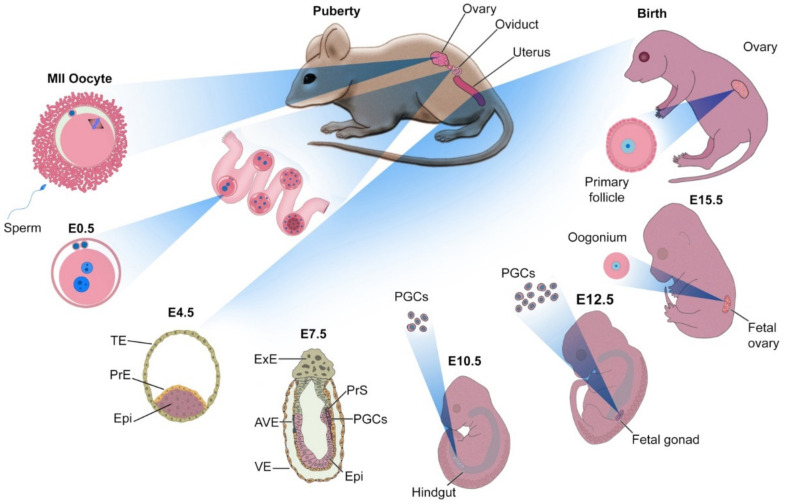Figure 1.
The development of mouse embryo in vivo. Fertilization, cleavage, and morula compaction take place in the oviduct. On an embryonic day 4.5 (E4.5), the advanced blastocyst is positioned in the uterus and is composed of epiblast (Epi), primitive endoderm (PrE), and trophectoderm (TE). On E7.5, the embryo is composed of extra-embryonic ectoderm (ExE), anterior visceral endoderm, visceral endoderm (VE), Epi, and primitive streak (PrS). At this stage, it has begun gastrulation and is connected to the uterus through the ExE. Several cells in the PrS receive signals from ExE and VE that commit them to differentiate into primordial germ cells (PGCs). With the formation of the gut, PGCs migrate through the hindgut, and on the E12.5, they are colonized and multiply in the gonad (which arises from the genital ridge). With the development of the ovary from the gonad, PGCs go through the early stages of differentiation into the oocyte, stopping shortly after birth in the germinal vesicle (GV) stage. With puberty and secretion of gonadotropins, the development of the oocyte is complete and an MII oocyte is formed. This MII oocyte exits the ovary so that it may enter the oviduct, ready for fertilization.

